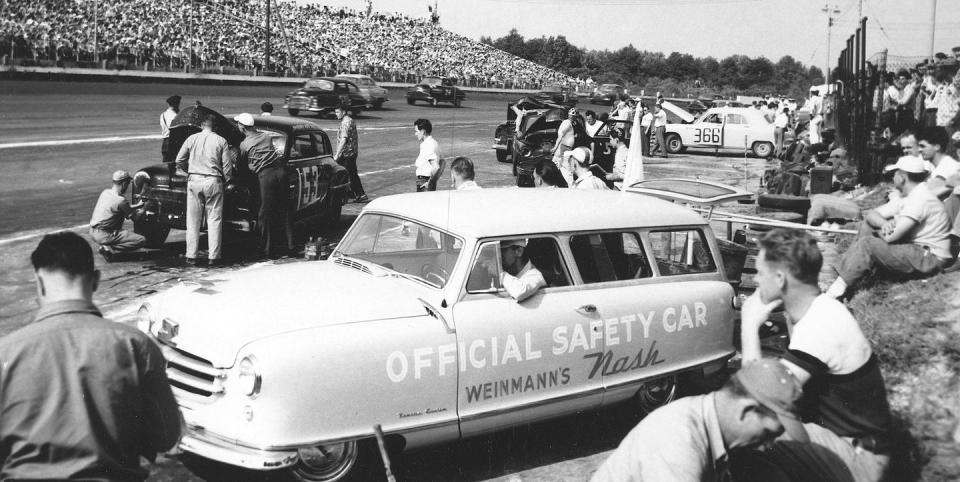Larry Mann Holds Sobering Place in NASCAR History

NASCAR is preparing to celebrate its 75th anniversary in 2023.
There will be special events and anniversary displays at race tracks, and, perhaps most importantly, there will be a much-anticipated racing return to North Wilkesboro (N.C.) Speedway, one of the sport’s bedrock tracks.
You perhaps already have gotten a glimpse of the yellow, red and blue diamond-shaped logo NASCAR apparently plans to use during the year of celebration.
During all the fuss, one name that you probably won’t hear is that of Larry Mann.
And for good reason.

Mann (whose real name was Lawrence Zuckerman) was the first driver to die while racing in what now is the NASCAR Cup Series. Mann, who apparently raced under that name because of either perceived or real prejudice against Jewish people in that place and time, died Sept. 14, 1952 of gruesome injuries suffered at Langhorne (Pa.) Speedway, one of the most dangerous tracks in all of motorsports.
Across the 70 years that followed, the death list got much longer. Gwynn Staley at Richmond. Joe Weatherly at Riverside. Fireball Roberts at Charlotte. Buren Skeen at Darlington. Tiny Lund at Talladega. Adam Petty at Loudon. And, of course, perhaps the deepest cut of all, Dale Earnhardt Sr. at Daytona in 2001.
The deaths, though always shocking, were hardly surprising. Mix fast cars with daredevil drivers carrying loads of flammable fuel in tight quarters between steel barriers or concrete walls, and serious accidents will occur. In far too many circumstances, they simply were accepted as part of the sport. But many deaths—notably Roberts’ fiery tragedy at Charlotte and Earnhardt’s crash into the outside wall at Daytona—led to safety innovations that have saved the lives of many racers. Fuel-cell improvements made fire much less of a worry after Roberts’ death, and Earnhardt’s accident led to “soft” walls and widespread use of head and neck restraints.
Mann suffered massive injuries in his crash. Contemporary news accounts of his accident are sketchy, but he apparently crashed into the track’s outside guard rail and rolled across it, smashing the car. He was pronounced dead of head injuries later that night at Nazareth Hospital near the track.
Lee Petty, one of the sport’s rising stars in its early years won the race. Ironically, Mann, whose Hudson Hornet was credited with a 22nd-place finish, drove car No. 43, the number that another member of the Petty family—Richard—would later drive to fame and glory.

 Yahoo Autos
Yahoo Autos 